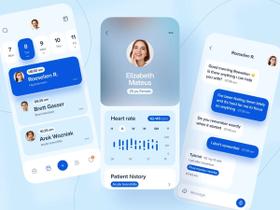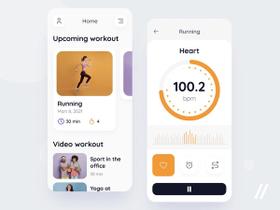What is IoT Device Management?
Published: September 29, 2023
7 min read
In this article, you'll learn:
1
🤔 What is it and Why it’s Important?
2
🚀 Benefits of Using IoT Device Management
3
🌐 How does it Work?
4
⚙️ IoT Device Management Platforms
5
👂 Takeaways
In a world that is becoming increasingly interconnected, the Internet of Things (IoT) has emerged as a transformative force. IoT has ushered in a new era where everyday objects, from household appliances to industrial machinery, are equipped with sensors, software, and connectivity, enabling them to collect and exchange data. As this phenomenon continues to evolve, the need for efficient IoT device management becomes paramount.
IoT devices aren't just increasing; they're multiplying incredibly fast. According to statistics from TechJury, the number of IoT devices is growing exponentially, with an anticipated 14.4 billion IoT devices expected to be in operation by the end of 2023. What's even more staggering is the projection that this number will surge to a staggering 27 billion IoT devices by the year 2025.
In this article, we will explain what IoT device management is, its benefits, how it works in detail, and which technology stack is ideal. Let's get started!
🤔 What is it and Why it’s Important?
Before we dive into the details, let's first clarify what IoT devices are. An IoT device is a specialized computing device that operates outside the realm of standard computers and mobile devices. While traditional devices (like tablets, desktops and so on) serve common computing purposes, IoT devices are designed with a distinct mission: they collect and transmit data to enable smarter and more connected environments. For example, lighting systems, security solutions, wearables, thermostats, fitness trackers, and various sensors.
IoT device management is the practice of overseeing, controlling, and maintaining IoT devices within an organization's IT ecosystem. This encompasses a range of tasks and procedures aimed at ensuring the optimal functionality and security of these devices. Key aspects of IoT device management include:
- Configuration and Deployment;
- Software Updates;
- Location Tracking;
- Diagnostics;
- Data Usage Management.
🚀 Benefits of Using IoT Device Management
IoT device management isn't just a technological convenience; it's a strategic necessity for organizations seeking to harness the full potential of the Internet of Things. By providing robust tools and solutions, IoT device management offers a myriad of benefits that significantly enhance operational efficiency and security.
Let’s explore these key features in detail 👇
⚙️ IoT Device Management Platforms
Here are some well-known platforms for IoT device management:
-
AWS IoT provides cloud-based services that facilitate the connection of IoT devices to both other devices and various AWS cloud services. AWS IoT Device Management supports a variety of protocols, including MQTT, MQTT over WSS, HTTP, and LoRaWAN. Security is a top priority, and AWS IoT offers robust encryption and access control mechanisms.
-
Azure IoT, a cloud platform from Microsoft, offers scalable, secure solutions for IoT projects. Azure IoT Hub facilitates reliable and secure communication between IoT devices and the managing IoT applications. It simplifies IoT deployment by offering automated device provisioning services.
-
The Google Cloud IoT) platform provides a scalable and fully managed environment for interacting with a global network of devices. From data ingestion to intelligence, Google Cloud IoT's building blocks empower you to extract value from device data. With Google Cloud IoT Core, you can predict maintenance needs, optimize device performance in real-time, detect anomalies, monitor device status, and foresee potential downtime.
Was it helpful?
Read also

What is IoT Monitoring?

IoT in Healthcare: From Clinics to Mobile Apps

IoT in the Fitness Industry: Devices, Use Cases & Tips

How Much Does It Cost to Develop an IoT Application: A Case Study-Based Roadmap

Top IoT Security Challenges and How to Deal with Them

Case Study: How We Solve Technical Challenges for Our IoT, Mobility, and Fitness Clients
Our clients say
![Stormotion client David Lesser, CEO from [object Object]](/static/93e047dadd367691c604d8ffd1f54b58/b0e74/david.png)
They were a delight to work with. And they delivered the product we wanted. Stormotion fostered an enjoyable work atmosphere and focused on delivering a bug-free solution.
David Lesser, CEO
Numina
